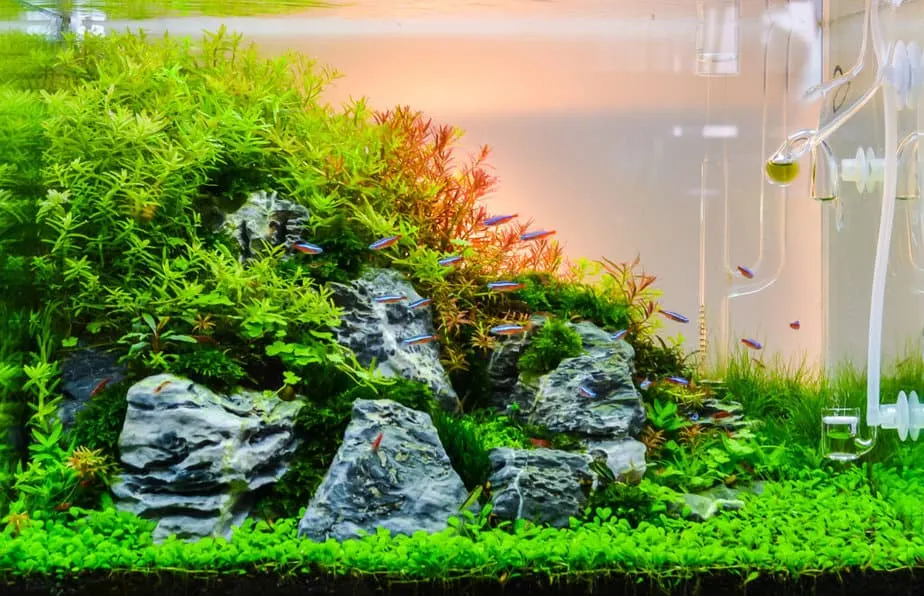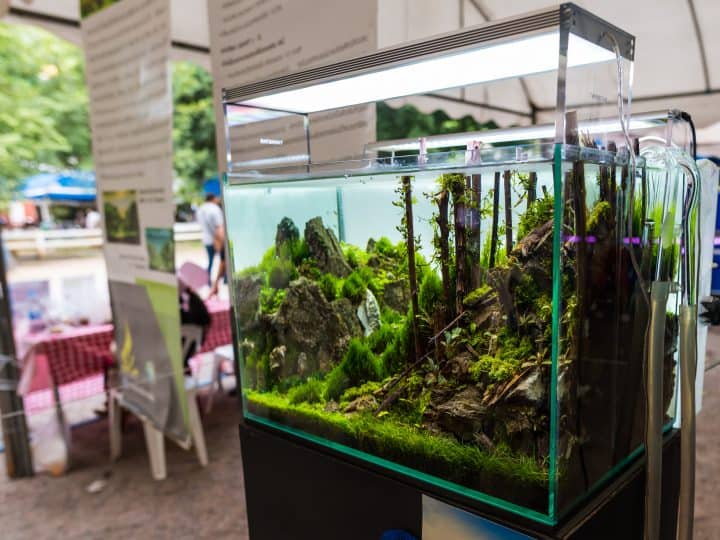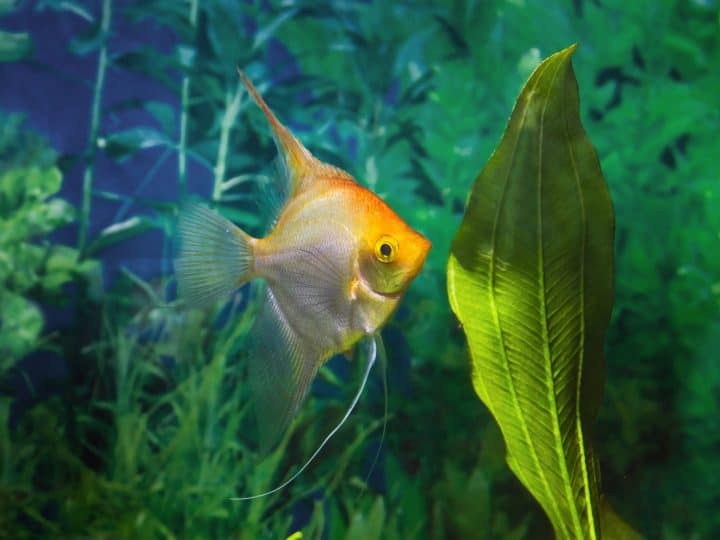One of my favorite aspects of any aquarium is watching those aquatic plants grow big and strong. Exactly what you’ll need to grow aquarium plants is what I’m here to talk about.
Quick Answer
To grow plants in an aquarium, you will need the right substrate or driftwood and anchors, fertilizers and nutrients, carbon dioxide, lighting, some good water flow, the right temperature, a good filter, the proper tankmates, and of course, the right aquarium plants too.
Read through my detailed list of all of the items you’ll need to grow plants in your aquarium. With the list below, you should have everything you need to grow any kind of plant imaginable.
Items Needed to Grow Plants in An Aquarium: The Ultimate Checklist
There are 10 main items that you will need to grow plants in your aquarium, so let’s take a quick look at each of them.

1. Substrate
First and foremost, you will need the right kind of substrate. Many aquarium plants enjoy growing in gravel substrate or specialized aquarium soil.
Therefore, knowing which plants require which kind of substrate is essential, which also means that you should already know what kind of plants you want to grow.
Both gravel and soil substrates have their advantages and disadvantages when it comes to plant growth, as well as ease of maintenance in general.
Aquarium soil is great for growing plants, but it can be much messier than gravel, although gravel doesn’t contain nearly as many nutrients.
2. Driftwood or Anchors
There are also plenty of aquarium plants that do not require any kind of substrate, such as gravel or soil. Rather, many aquarium plants are known for growing on solid or hard objects, such as rocks, driftwood, and aquarium decorations.
If you plan on getting these kinds of plants, you’ll need some fishing line or aquarium string to anchor those plants down to the rocks and pieces of driftwood.
On that note, if you are going with this route, you will also need some rocks and pieces of driftwood to serve as anchors for those plants.
3. Nutrients and Fertilizers
Although not always the case, there are also many aquarium plants that will require you to supplement nutrients. Some of the main nutrients those plants will need include nitrogen, phosphorus, and potassium, among others.
There are some aquarium plants that will not require any additional nutrients or fertilizers, as the water column should contain enough of them to survive.
However, there are also just as many, if not more aquarium plants, which cannot survive on the limited amount of nutrients available in the water alone, and will therefore require supplementation.
There are many different kinds of fertilizers for aquariums, including powdered plant fertilizers, liquid nutrients, and root tabs that are designed to be placed in substrate.
Just be sure not to add too many nutrients into your fish tank, or else it may cause problems for your fish, and may also lead to algae blooms.
4. Carbon Dioxide
Most aquarium plants do very well when there is additional carbon dioxide in the water. Carbon dioxide is something that plants require in order to perform photosynthesis and to survive in general.
Just like with fertilizers and nutrients, there are plenty of good aquarium plants that will not require additional carbon dioxide injection, but all plants do better when they receive higher amounts of it.
While you might not need it in many cases, plants always benefit from it. Therefore, considering getting a good CO2 injection system for your fish tank is recommended if you plan on growing a heavily planted tank.
5. Light
One of the most important things that any plant needs to grow, whether under or above water, is light, specifically sunlight. In order for plants to survive and grow, they need to perform photosynthesis, which is when they utilize UV or sunlight energy to convert their food into energy.
Without adequate amounts of light, plants will not be able to perform photosynthesis, and will not grow, and most likely start to die. Therefore, having a decent aquarium hood with a built in light, or just a separate light, is recommended.
6. A Water Pump or Powerhead
Although some plants might do just fine in completely still water, having dead spots in your aquarium is never good, because waste and unwanted substances can build up in the dead spots.
Furthermore, having a bit of water flow in your tank is ideal because flowing water helps to bring nutrients to the plants, therefore helping them survive much easier.
You should invest in some sort of powerhead or water pump that will create a good deal of water flow within the aquarium.
7. A Heater
Something else to keep in mind is that aquarium plants require specific temperatures. The exact temperature aquarium plants need depends on the specific plant itself.
On that note, you should therefore aim to get a variety of aquarium plants that are all able to survive in the same temperature range, or else you will run into problems.
Whatever the case, chances are that your aquarium water might not be quite warm enough for all of your aquarium plants on a regular basis.
This is especially the case if you live in a climate where it can get cold during certain times of the year or at night. Therefore, investing in a small aquarium heater is recommended to provide your plants with the optimal growth temperature.
8. A Functioning Aquarium Filter
While it is true that aquarium plants serve as decent filters, you’ll still want an additional filtration unit. The reason for this is because an aquarium filter will help remove excess fish waste and uneaten food from the water, and also helps to break down ammonia and nitrites.
This is very important because a good aquarium filter helps to remove the food sources that algae would otherwise use to grow and bloom. You want to do anything and everything possible to prevent algae blooms from occurring, because they can effectively suffocate your plants.
9. The Right Tank Mates
Something else to keep in mind here is that in order to grow certain aquarium plants, there are specific fish or critters that you might not want present. Some aquarium plants are compatible with certain fish, whereas others are not.
Some aquarium plants are susceptible to being eaten by certain fish, and there are also fish that like to dig in substrate and root up plants.
Therefore, you need to make sure that you don’t have fish in your tank that will eat the chosen plants or try to uproot them. Doing some research to see that your fish and plants are compatible is recommended.
10. The Right Kind of Aquarium Plants
Of course, in order to grow aquarium plants, you need to have the right plans to begin with. Some of the best beginner friendly aquarium plants include Vallisneria, Java Moss, and Java ferns.
In fact, these are all types of plants that really don’t require additional carbon dioxide injection or fertilizers. As long as you have a well-maintained tank, they should survive just fine.
Conclusion
Although the list of items required to effectively grow aquarium plants might seem quite intimidating, the reality is that most of these items are very affordable. Furthermore, most of the items on this list could also last for many years to come.


